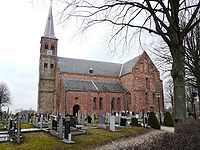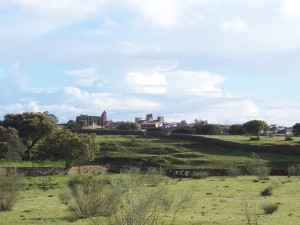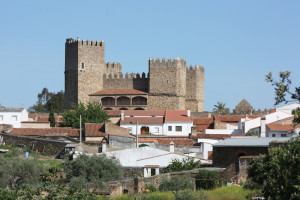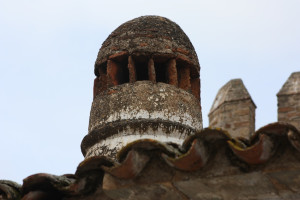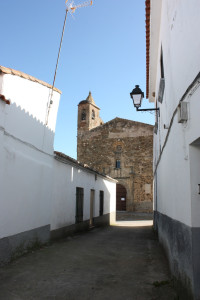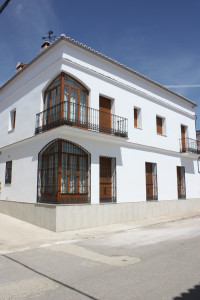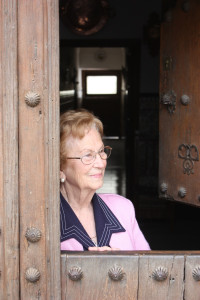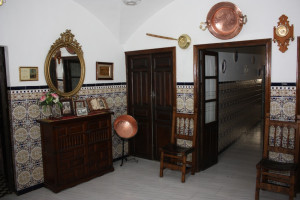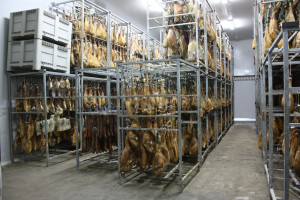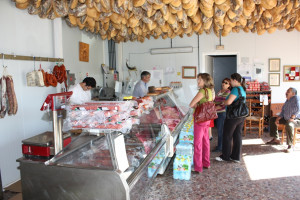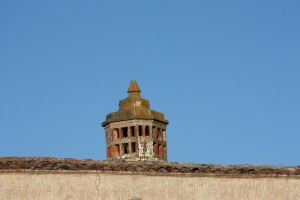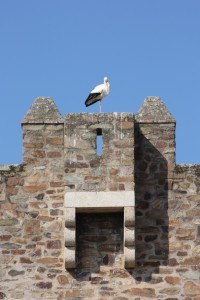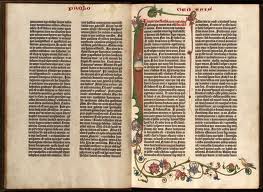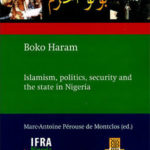CDA: een niet onbelangrijke programmatische verandering
Op 9 juni 2010 vond wederom een verkiezing van de leden van de Tweede Kamer der Staten-Generaal plaats. In totaal 9.442.977 kiesgerechtigden (opkomstpercentage 75,4) maakten letterlijk of figuurlijk de gang naar het stemlokaal, van wie er 9.416.001 een geldige stem uitbrachten. Zij hadden de keuze uit een aanbod van 18 politieke partijen of kandidatenlijsten, zij het dat niet in alle (19) kieskringen al deze lijsten zich aan de kiesgerechtigden presenteerden. Van de deelnemende partijen slaagden er tien in voldoende stemmen te behalen om vertegenwoordigers naar de Tweede Kamer te mogen afvaardigen. De VVD werd nipt de grootste partij met 31 zetels, gevolgd door de PvdA (30), de PVV (24), het CDA (21), de SP (15), GroenLinks (10), D66 (10), CU (5), de PvdD (2) en de SGP (2).
Lejos de la Costa ~ Far from the Costas. Introducción ~ Introduction
Introducción
Extremadura es una de las regiones más occidentales de España, situada junto a la frontera portuguesa. Muy pocos extranjeros han oído hablar de esta región y la han visitado.
Es una región poco conocida de la que uno desea que siga siendo así. Una región con mucho espacio natural, donde lo más habitual es la tranquilidad, donde las puestas de sol presentan una amplia gama de colores entre nubes y donde la luna aparece completamente redonda. Una región con muchos pájaros donde las campanas de las vacas tintinean día y noche.
Se puede caminar o montar a caballo o en bicicleta por los extensos campos e ir de pueblo en pueblo, junto a las viejas cercas, por vías pecuarias o a través de campos de cultivo con encinas. Uno se imagina situado en la Edad Media con un retroceso de varios siglos.
Pero hay también alegría y cultura española. También en Extremadura hay veranos españoles con tardes largas, plazas ruidosas, festivales rurales (fiestas) y procesiones. Llegando esta época de verano la vida tranquila se convierte en una actividad bulliciosa, doblándose el número de habitantes en los pueblos, donde acuden los que en su día se marcharon para encontrarse con la familia, los viejos amigos y beber los vinos locales y cerveza con tapas de jamón ibérico, y además charlar y charlar. Uno de estos pueblos de Extremadura es Monroy.
Monroy, cuyas familias vivieron con dificultad durante siglos, es un pueblo donde el tiempo se detuvo. No es por ello de extrañar que los grandes conquistadores se fuesen de esta región. Todavía se encuentra en este pueblo el viejo castillo que ofreció protección durante la reconquista, restos de una antigua Villa Romana y viejas vías pecuarias.
Introduction
Extremadura is the most western province of Spain, along the Portuguese border. Only a few foreigners have heard of the region, and sometimes somebody has travelled through the area.
A hidden country, of which you hope that it will always remain this way. A spacious area where tranquility is so common, where the sun sets multicolored with splendid cloud parties and the moon rises full and round. A country with so many birds, where the cow bells tinkle day and night.
You can walk or ride infinitely through the fields, from village to village; between age-old walls, over cattle roads or through farming fields with mighty stone oaks.
You imagine yourself in the middle ages, far back in time.
But there is also Spanish liveliness and culture. Summer evenings in the Extremadura are long and filled with noisy squares, rural festivals (fiestas) and processions. The quiet life accelerates and the number of inhabitants doubles when family and old friends come to the villages from all wind regions, to drink the local wines or cervesa (beer) with the tapa jamon Iberico and talk and talk.. One of these villages in the Extremadura is Monroy.
Monroy, historically a place where ordinary man had difficulty surviving. Therefore, from time immemorial, a place where one got away from. It’s no surprise that the great conquistadores came from this region. Still standing are the old castle which offered protection during the Reconquista and the remainders of the Villa Romana and the old cattle roads.
Next: Monroy – Un pueblo de Extremadura ~ A village in the Extremadura
Links
Blog Asociacion Historico Cultural el Bezudo Monroy: http://elbezudo.blogspot.com/
Urbanization: http://esa.un.org/unpd/wup/index.htm
Lejos de la Costa ~ Far from the Costas. Monroy. Un pueblo de Extremadura ~ A village in the Extremadura
Un pueblo de Extremadura
Monroy está situado a unos 30 km de Cáceres, en medio del triángulo formado por Cáceres, Trujillo y Plasencia. Extremadura se encuentra rodeada por montañas que están situadas al norte, este y oeste. Tiene un clima continental con inviernos fríos y veranos calurosos y durante mucho tiempo ha estado aislada del resto de España, siendo actualmente una de las regiones más pobres.
El pueblo de Monroy está situado en lo alto de una altiplanicie, donde existen varias fuentes por lo que fue un lugar estratégico para construir un castillo. Esto ocurrió a principios del siglo XIV. Los alrededores de la población ya estuvieron habitados durante la edad del bronce así como durante la época de los romanos y los visigodos. En 1309 el rey Fernando IV concedió al noble Hernán Pérez de Monroy el privilegio de fundar una aldea y construir un castillo.
Lo típico de los pueblos de esta región es su estructura. La parte antigua de la población con su iglesia y su castillo. Alrededor del pueblo se encuentran los viejos corrales donde se cultivan verduras y se guarda el ganado, los caballos, los cerdos y las gallinas. 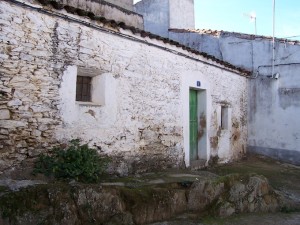 Alrededor del pueblo se encuentran las cercas que son terrenos de algunas hectáreas de extensión donde se guarda y pasta el ganado y los caballos. También en los alrededores del pueblo se encuentra el área comunal donde pastan las ovejas, las cabras y el ganado de los vecinos. Rodeando todo lo anterior se encuentra las grandes extensiones de terreno, que son fincas donde se da la ganadería extensiva y los toros de lidia.
Alrededor del pueblo se encuentran las cercas que son terrenos de algunas hectáreas de extensión donde se guarda y pasta el ganado y los caballos. También en los alrededores del pueblo se encuentra el área comunal donde pastan las ovejas, las cabras y el ganado de los vecinos. Rodeando todo lo anterior se encuentra las grandes extensiones de terreno, que son fincas donde se da la ganadería extensiva y los toros de lidia.
A village in the Extremadura
Monroy lies about 30 km from Cáceres, in the middle of the triangle Cáceres-Trujillo-Plasencia. Extremadura is surrounded by the mountains in the west, the north and the east. It has a continental climate with cold winters and hot summers and for ages it has been a fairly isolated area in Spain and until now still one of the poorest regions.
The village lies on a hillock in the highland and has been surrounded by water sources, and therefore in the past a good strategic spot for building a castle. That was at the beginning of the fourteenth century. Already before that the surroundings were inhabited in the bronze time and at the time of the Roman and the Visgoten.
In 1309 King Ferdinand IV granted to the nobleman Hernán Pérez the Monroy the privilege for founding the village and the construction of a castle Typically of the villages in this region is the composition. The old centre with church and castle, at the edge of the village the old corals where one grows vegetables, keeps cattle, horses, pigs and chickens and around the village the cercas, small plots of a few hectares where one mostly keeps cattle and also horses. Around the village the communal area, the grazing area for the sheep and cattle and to a lesser degree the goats. Bordering to the communal area are situated the haciëndas, large farms with extensive livestock-farming and bull-breeding.
From The Web – The Digital Scriptorium
The Digital Scriptorium is a growing image database of medieval and renaissance manuscripts that unites scattered resources from many institutions into an international tool for teaching and scholarly research.
As a visual catalog, DS allows scholars to verify with their own eyes cataloguing information about places and dates of origin, scripts, artists, and quality. Special emphasis is placed on the touchstone materials: manuscripts signed and dated by their scribes. DS records manuscripts that traditionally would have been unlikely candidates for reproduction. It fosters public viewing of materials otherwise available only within libraries. Because it is web-based, it encourages interaction between the knowledge of scholars and the holdings of libraries to build a reciprocal flow of information. Digital Scriptorium looks to the needs of a very diverse community of medievalists, classicists, musicologists, paleographers, diplomatists and art historians. At the same time Digital Scriptorium recognizes the limited resources of libraries; it bridges the gap between needs and resources by means of extensive rather than intensive cataloguing, often based on legacy data, and sample imaging.
Digital Scriptorium institutional partners have instituted a governance structure to plan jointly for the future of the program, in terms of scope, sustainability, and content.
Read more: http://bancroft.berkeley.edu/digitalscriptorium/
Dutch Wonderland!
Tolerance ranks high among the markers of being Dutch. In paintings of Rembrandt van Rijn one can possibly see that he was liberal and tolerant (Hoekveld-Meijer). Many scholars and politicians maintain that the Netherlands has a tradition of tolerance that harkens back to the 17th Century, generated by the Dutch tradesman spirit.
‘It’s a misconception that the Dutch are essentially racist and that they discriminate’ (Derksen, 2005, 38; italics mine -ldj). Paul Scheffer, who coined the concept of ‘a multicultural drama’ in the Netherlands, upholds his confidence in the Dutch: ‘Most people have essentially nothing against the presence of immigrants, and they want to live peacefully with them (Hooven, 2006, 112; italics mine -ldj). These reassurances of the Dutch being essentially good people may be an indication that nowadays the Dutch tend to behave differently than in the immigrant era of the 17th Century, suggesting that the Dutch have temporarily wandered off from the correct Dutch course. This Golden Century, as it is called in the Netherlands, still serves as a rich source for Dutch identity construction. Read more
From The Web – Longreads – The Best Long-Form Stories On The Web
 Longreads are changing the way people read online.
Longreads are changing the way people read online.
They’re stories that are best enjoyed away from your desk — whether it’s on a daily commute, an airplane, a subway, or your couch. It’s in-depth stories, perfect for the iPad, iPhone or Kindle, and apps like Read It Later, Flipboard and Instapaper.
Longreads posts links to new stories every day — they include long-form journalism, magazine stories from your favorite publications (The New Yorker, Esquire, The Atlantic), short stories, interview transcripts, and even historical documents. (For the record: Longreads are typically more than 1,500 words.)
